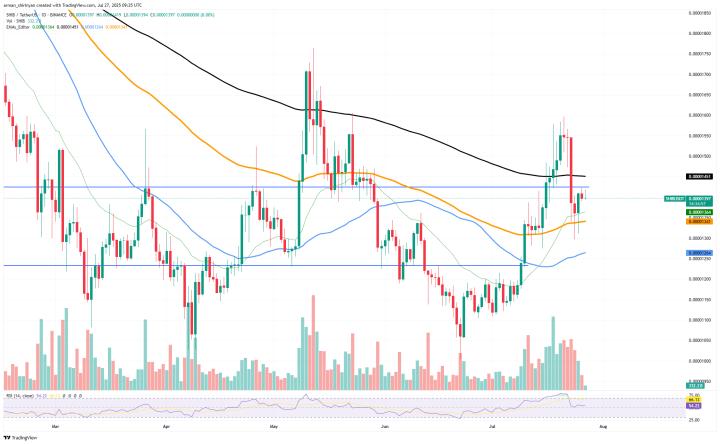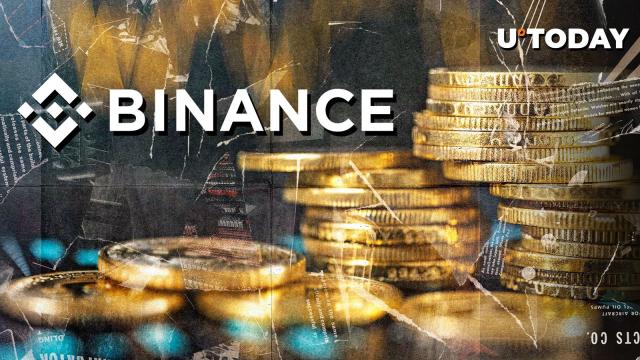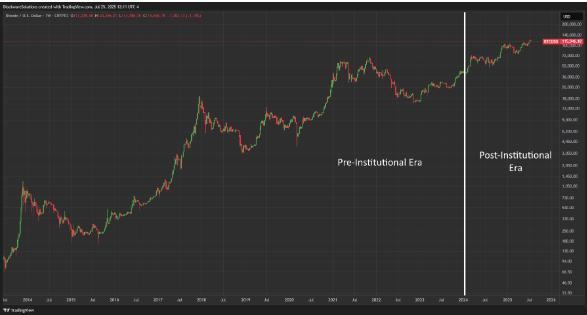The article mentions the upcoming regulatory guidelines and license application details that will provide clear direction for market participants.
Author: Bibi News
Stablecoins, as a crucial bridge connecting cryptocurrency and traditional financial systems, have attracted global market attention in recent years. As an international financial center, Hong Kong is actively exploring a regulatory framework for stablecoins to promote their steady and sustainable development. However, amid market enthusiasm, issues such as excessive hype, vague concepts, and potential financial risks have gradually emerged. On July 23, Norman Chan, the Chief Executive of the Hong Kong Monetary Authority, published an article titled "Steady and Far-Reaching Stablecoins". From a regulatory perspective, the article discusses the current development status of the stablecoin market, analyzes the concerns arising from over-conceptualization and bubble trends, and emphasizes the necessity of strict anti-money laundering supervision. Meanwhile, the article elaborates on the Hong Kong Monetary Authority's regulatory approach after the Stablecoin Ordinance takes effect, including prudent licensing, risk prevention, and how to balance innovation and stability to ensure the industry's steady development. Finally, the article mentions the upcoming regulatory guidelines and license application details that will provide clear direction for market participants.
Steady and Far-Reaching Stablecoins
A month ago, I discussed in this column how to promote the steady and sustainable development of stablecoins in Hong Kong and suggested cooling down the stablecoin fever. Looking at the market and social discussions about stablecoins over the past month, the cooling-off efforts still need to be strengthened. Today, I want to discuss our perspective from a regulatory standpoint and how we will implement the Stablecoin Ordinance according to the principles of steadiness and sustainability.
Avoiding Excessive Hype
As an emerging payment tool gradually entering the traditional financial system through regulation, stablecoins have a positive significance, and it is normal for the public to be interested in their functions and development prospects. However, we must prevent excessive market and public opinion hype, and there are some phenomena worth our attention recently.
First, over-conceptualization. Discussions around stablecoins tend to focus on their disruptive impact on traditional finance, especially payment systems. However, when moving from theory to practical application and specific arrangements, a significant gap becomes apparent. Taking Hong Kong's experience as an example, dozens of institutions have already proactively contacted the HKMA team, with some expressing clear intentions to apply for stablecoin licenses and others exploring preliminary possibilities. Summarizing these interactions, many are still at the conceptual stage, such as proposing to enhance cross-border payment efficiency, support Web3.0 development, and improve foreign exchange market efficiency, but lack actual application scenarios and cannot provide feasible specific plans or implementation strategies, let alone demonstrate risk management awareness and capabilities. Some institutions that can provide application scenarios lack the technical capabilities and experience in issuing stablecoins and managing various financial risks. For such institutions, a more practical approach seems to be collaborating with stablecoin issuers and providing application scenarios rather than pursuing the role of an issuer.
More concerning is the bubble trend. Recently, with the heated promotion of stablecoin concepts, the market has shown excessive excitement. Some listed companies, regardless of whether their core business is related to stablecoins or digital assets, see their stock prices rise and trading volumes increase simply by claiming interest in exploring stablecoin business, thereby enhancing their visibility. In fact, we have already clearly stated that in the initial stage, only a few stablecoin licenses will be issued, meaning many will be disappointed. Even for those obtaining licenses, considering our desire for steady development and the initial resource investment required, the short-term profitability contribution remains uncertain. We hope investors maintain calmness and independent thinking when digesting market good news. Additionally, we have noticed recent fraud attempts involving digital asset and stablecoin promotions, causing public losses. The Stablecoin Ordinance will take effect on August 1st, and according to the ordinance, promoting any unlicensed stablecoins to the Hong Kong public will be illegal from the effective date. We hope citizens remain vigilant to avoid legal risks; during this period, one must be cautious if anyone promotes unlicensed stablecoins.
Preventing Financial Risks
Stablecoins have also been a topic of extensive discussion among central banks and financial regulators, focusing on their intrinsic and spillover risks, including impacts on traditional financial markets and banks. However, the greater concern is how to prevent stablecoins from being used as money laundering tools, especially in cross-border scenarios. The Bank for International Settlements, often referred to as the central banks' central bank, emphasized the importance of preventing stablecoin money laundering risks in its latest annual economic report.
As an international financial center with a reputation for robust regulation, Hong Kong will immediately implement two guidelines for regulation and anti-money laundering after the Stablecoin Ordinance passes, currently adjusting requirements based on market feedback and aiming to publish them by the end of July. We expect the final version will not differ significantly from the consultation draft, and given international regulatory concerns, we will establish more stringent anti-money laundering requirements to minimize the risk of stablecoins becoming money laundering tools, ensuring the orderly and healthy development of Hong Kong's stablecoin market.
Balanced regulation is an art. More rigorous regulatory requirements will inevitably limit the potential for rapid stablecoin business expansion in the short term, and the industry will naturally respond. After all, the regulated stablecoin business is in its early stages. Starting strictly, ensuring stability, and then gradually relaxing based on practical experience is far more beneficial to the market and issuing institutions' sustainable development compared to starting too loosely and then cleaning up the mess. Of course, we must ensure the necessity and reasonableness of regulatory requirements, creating space for issuers to establish and grow steadily.
We have also noticed numerous rumors in the market regarding the application process, and we will publish a summary of the "Stablecoin Issuer Licensing System" next week. The document will elaborate on the arrangements for the monetary authority to accept and process license applications. Interested parties are advised to stay tuned.
Disclaimer: As a blockchain information platform, the articles published on this site represent only the personal views of the authors and guests, and are not related to Web3Caff's stance. The information in the articles is for reference only and does not constitute any investment advice or offer. Please comply with the relevant laws and regulations of your country or region.
Welcome to join the Web3Caff official community: X(Twitter) Account丨Web3Caff Research X(Twitter) Account丨WeChat Reader Group丨WeChat Official Account







